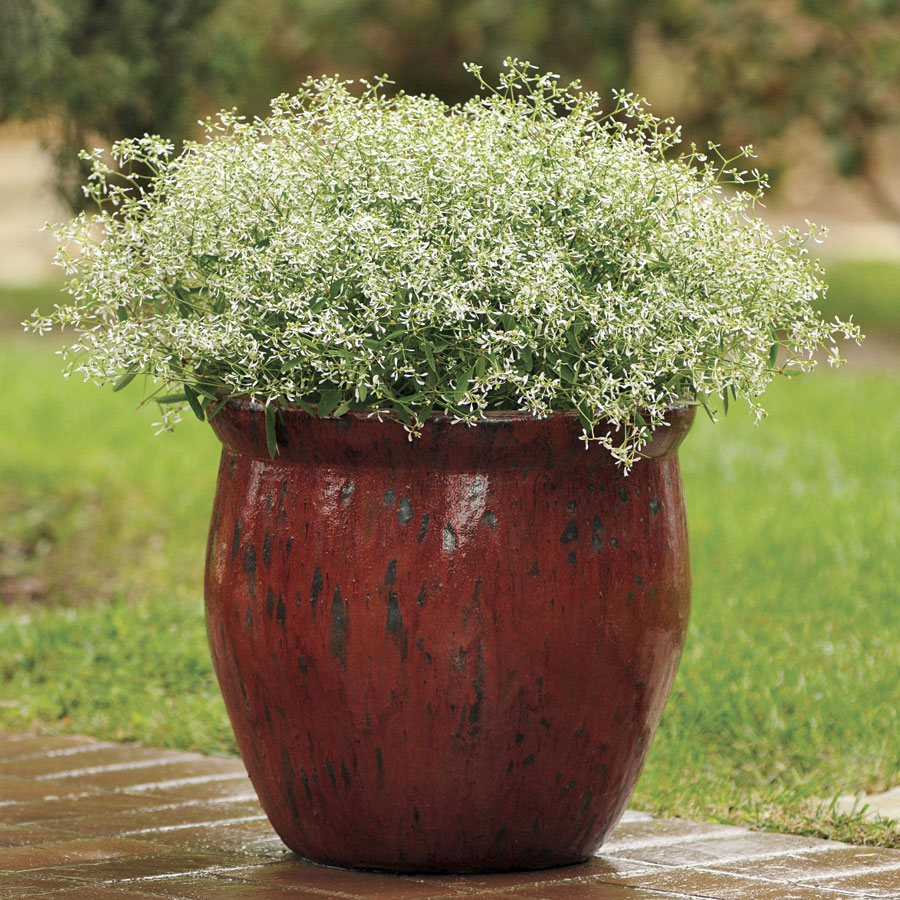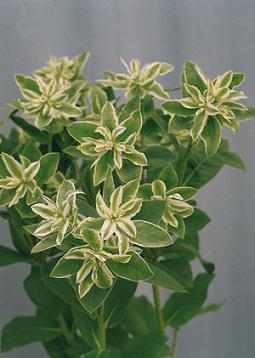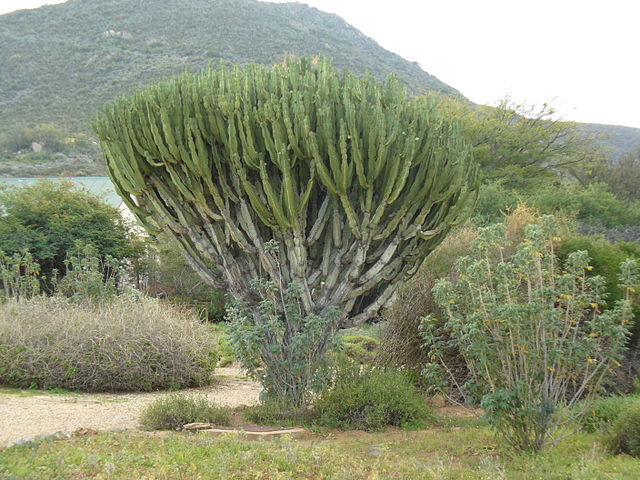New Account | Seed Mix |
Gift Certificates |AAS Winners |
Gardening Products
SEEDS: Unusual | Annuals | Perennials | Vegetables | Herbs | Trees
Spurge ( Euphorbia ) Seeds
Most varieties of Euphorbia plants produce weird and unusual flowers. Gardeners should be cautious when handling Spurge, as all varieties have a milky latex sap that can be irritating or even poisonous.
Useful gardening information
As a general rule, Spurge requires well-drained soil in full sun. A few tolerate shadier conditions, but none of the family is fussy about soil condition. They even thrive in very poor soils and can tolerate periods of drought.
Euphorbia plant care is simple. Provide them light, moderate moisture and watch for annoying pests, like whitefly. It is best to water the soil under the plants leaves ( rather than spraying foilage ) to prevent powdery mildew.
You will not need to fertilize Spurge often. Wait until the bottom leaves become yellow before feeding with a water-soluble plant food.

SF392 Glitz Euphorbia ( Euphorbia graminea )
Glitz is a glorious variety, sporting masses and masses of tiny white blooms held at the very tip of finely cut, pastel-green stems. It's the perfect container choice, standing well on its own or making a fine companion to all your flowering and foliage plants.
Glitz earns its names with hundreds upon hundreds of tiny, slender-petaled, bright white blooms. Beautiful at all times, they show to special effect at twilight, when they linger in the gloaming like a thousand points of light.
Glitz reaches 10 to 14 inches high and spreads 12 to 18 inches wide, but will adjust to the available space if planted in a tight container. It spills delightfully over the sides of baskets and windowboxes, mounding gracefully. And it works nicely in garden beds, too. In containers, think of it as a fresh alternative to Baby's Breath, offering airy leaf-like foliage and starry blooms as a backdrop to larger flowers or more dramatic variegated foliage plants.
This Euphorbia is a sun-lover, but tolerates a bit of shade, particularly in hot-summer climates. It is very resistant to the effects of heat and drought, so you don't have to worry about it looking exhausted on those blazing July days.
Glitz earns its names with hundreds upon hundreds of tiny, slender-petaled, bright white blooms. Beautiful at all times, they show to special effect at twilight, when they linger in the gloaming like a thousand points of light.
Glitz reaches 10 to 14 inches high and spreads 12 to 18 inches wide, but will adjust to the available space if planted in a tight container. It spills delightfully over the sides of baskets and windowboxes, mounding gracefully. And it works nicely in garden beds, too. In containers, think of it as a fresh alternative to Baby's Breath, offering airy leaf-like foliage and starry blooms as a backdrop to larger flowers or more dramatic variegated foliage plants.
This Euphorbia is a sun-lover, but tolerates a bit of shade, particularly in hot-summer climates. It is very resistant to the effects of heat and drought, so you don't have to worry about it looking exhausted on those blazing July days.

3295 Kilimanjaro ( Euphorbia marginata )
Pure white bracts, variegated foliage, strong stems, flowers under long days, early, for garden or cut. An excellent annual variegated foliage plant for borders, meadows and cutting gardens.
Grow as an annual plant, reaches 48" tall.
Grow as an annual plant, reaches 48" tall.
Seedman Cutflower Info:
Handling: Dip stem ends into hot to boiling water, then cut 1/2" from stem. The dipping prevents the flow of milk that will block the water vessels.
Vaselife: 8-12 days
Remarks: Sensitive to temperatures below 60 F. Do not keep around ripe fruit. Avoid contact of the milk with eyes.
LET617 Candelabra Tree Cactus ( Euphorbia ingens )
This is a popular plant because it can be grown easily inside and outside and is in fact a popular houseplant.
Outside, these are large tree-like succulents that are beloved for their stately appearance and low-maintenance nature. They are characterized by dark green, four-lobed stems and a columnar growth structure that branches as they mature—leading to the common nicknames candelabra cactus and African candelabra tree.
Grows well both indoors and outdoors and has become a popular choice for rock gardens and indoor houseplant enthusiasts alike. Outside, these succulents can grow up to 40 feet tall, but they usually top out at around 8 to 10 feet tall when grown indoors.
Zone 10 outside, grown as indoor plant in cooler zones. Growers should exercise caution when handling this succulent tree as the milky latex sap of the Euphorbia ingens is considered extremely toxic to humans and pets.
Zone 10 outside, grown as indoor plant in cooler zones. Growers should exercise caution when handling this succulent tree as the milky latex sap of the Euphorbia ingens is considered extremely toxic to humans and pets.
Share a growing tip or recipe and help other gardeners!
Click on the Contact Form link, place "Tip" in the name line and fill in your information. If we accept your Spurge growing tip, we will post it on this page.

